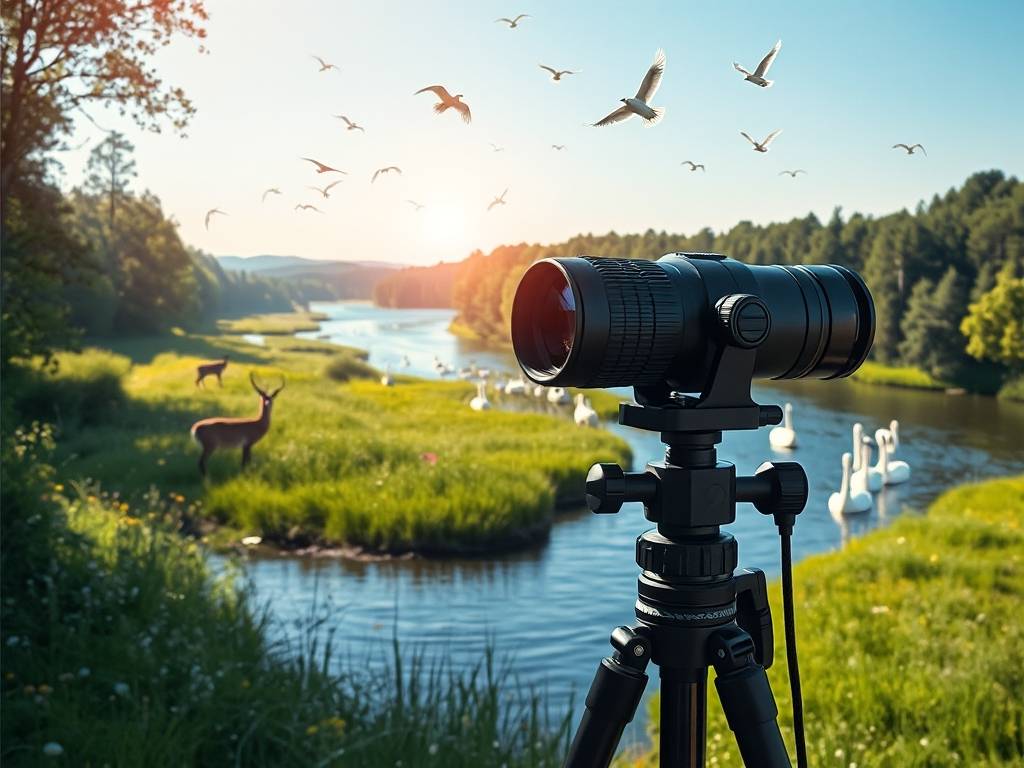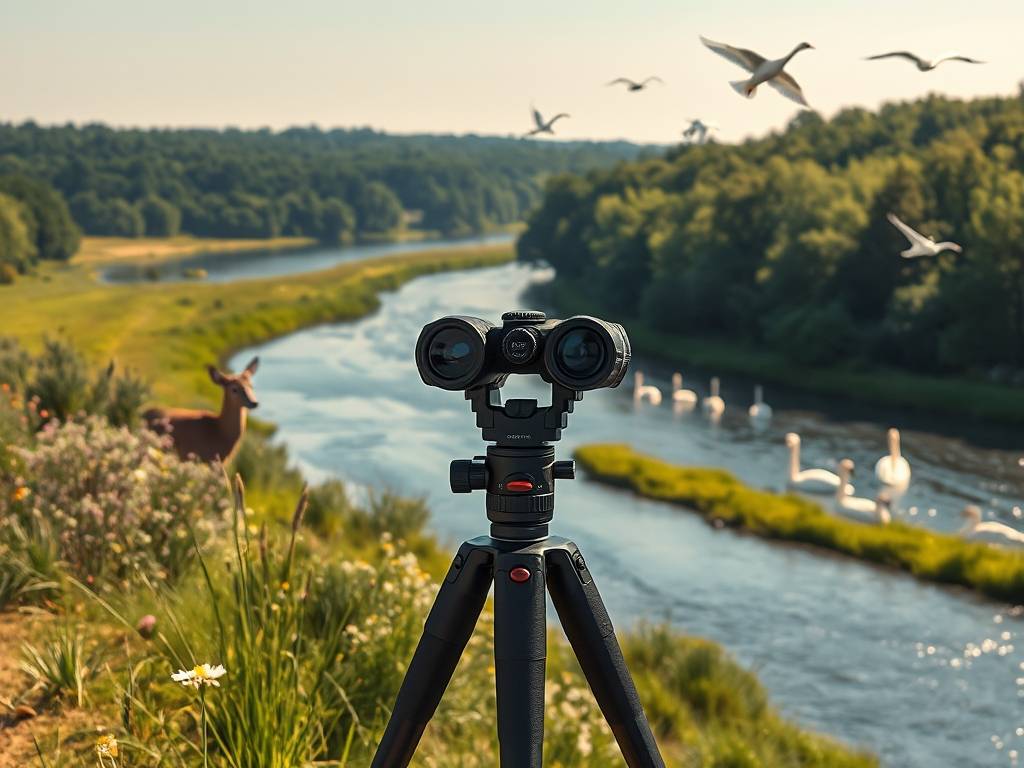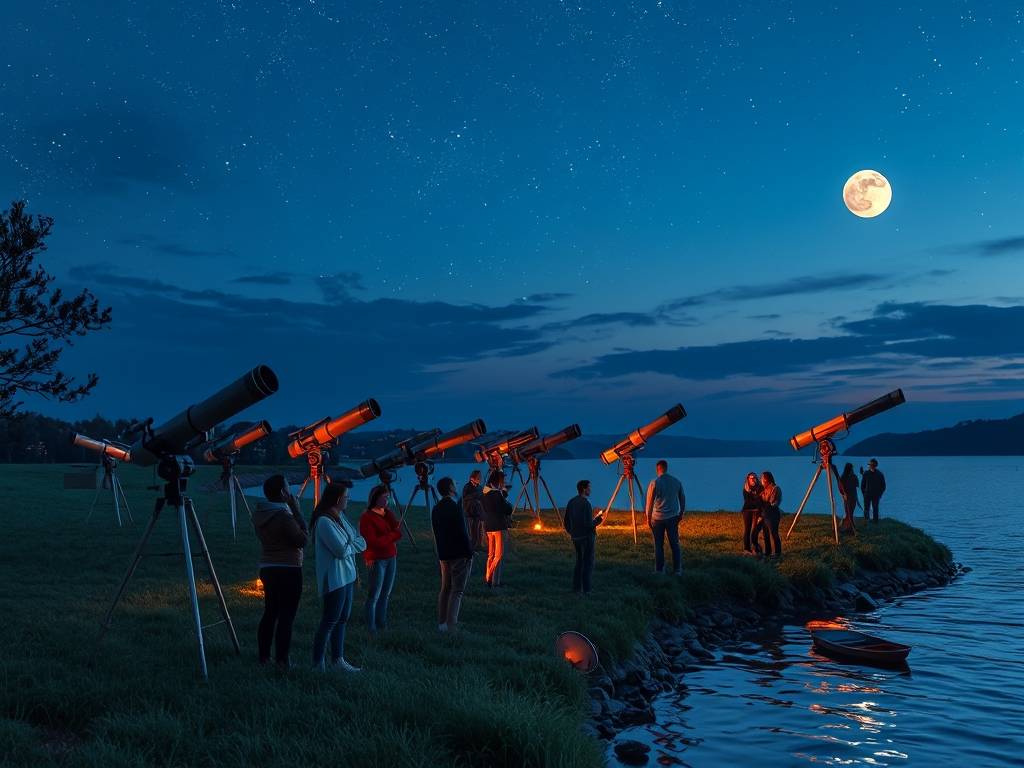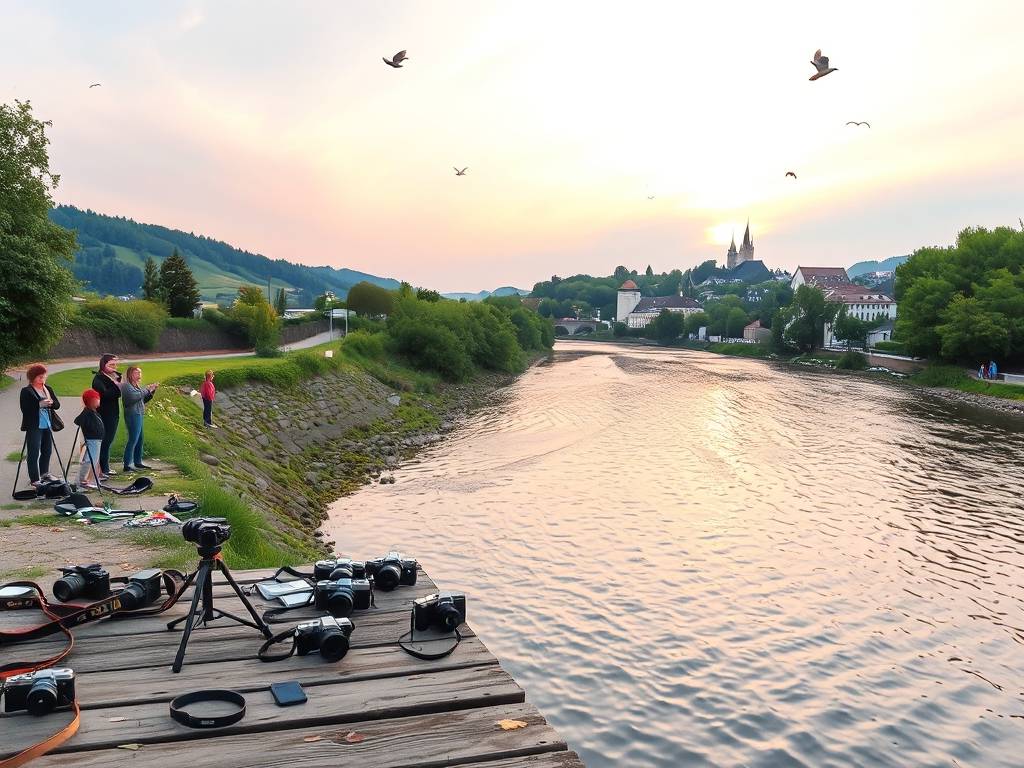Global Travel Information
Elbe River Binoculars: Spot Wildlife from Afar
The Elbe River Through a Different Lens: Your Guide to Wildlife Watching with Binoculars
There's a certain magic to the Elbe River. As it winds its way from the Czech Republic's dramatic mountains, through Germany's heartland, and out to the North Sea, it carves a ribbon of life through the European landscape. You can feel this magic simply by standing on its banks, watching the water flow. But to truly understand it, to peer into the secret world that thrives along its shores, you need the right tool. You need a pair of binoculars.
This isn't just about magnification; it's about transformation. A simple walk becomes a safari. A distant blur on a sandbank resolves into a regal white-tailed eagle, its gaze fixed on the water. A rustle in the riverside reeds reveals a family of beavers at their engineering work. The Elbe River is one of Europe's most vital ecological corridors, and with a trusty pair of binoculars, you become a privileged guest in this sanctuary of biodiversity. This guide is your companion to mastering the art of Elbe River wildlife observation, ensuring you don't just see, but truly discover.

Why the Elbe is a Prime Spot for Nature Enthusiasts
The Elbe's value for flora and fauna conservation is immense. Unlike many major European rivers, long stretches of the Elbe remain relatively natural, with floodplains, meadows, and forests that have been designated as a UNESCO Biosphere Reserve. This protected status means the river functions as a superhighway for species. It's a place where birdwatching on the Elbe River is world-class, attracting everything from tiny kingfishers to colossal cranes. The river’s health is a testament to decades of sustainable tourism along the Elbe, proving that human enjoyment and nature conservation can go hand-in-hand.
For you, the visitor, this translates into unparalleled opportunities. Whether you're on a dedicated Elbe River cycling tour, a leisurely river cruise, or simply hiking a section of its banks, the wildlife is there, waiting to be noticed. The key is patience and the right perspective—a perspective offered by your binoculars.
Choosing Your Perfect Pair: Binoculars for the Elbe Environment
Not all binoculars are created equal, and the varied terrain of the Elbe calls for a versatile companion. The two numbers you'll see on every pair, like 8x42, are your starting point. The first number (8x) is the magnification. For a dynamic environment like the Elbe, 8x or 10x is ideal. Higher magnification can make the image shaky without a tripod. The second number (42) is the diameter of the objective lens in millimeters; a larger number gathers more light, providing a brighter image, which is crucial for dawn, dusk, or overcast days—prime wildlife spotting times.
For the best binoculars for Elbe River wildlife viewing, consider these features:
- Waterproof and Fog-proof: The river environment is humid, and weather can change quickly. Nitrogen or argon purging ensures your lenses don't fog up internally.
- Close Focus: This allows you to admire a butterfly on a nearby flower as easily as a distant bird. The biodiversity here isn't just about large mammals!
- Weight and Ergonomics: You'll be holding them for long periods. A comfortable, lightweight pair (around 600-800 grams) won't become a burden on your Elbe River cycling tour.
Think of your binoculars as an investment in discovery. They are your most important piece of Elbe River travel gear for nature lovers.
A Seasonal Guide to Elbe River Wildlife Spotting
The cast of characters on the Elbe's stage changes with the seasons. Your binoculars for nature observation will reveal a different drama every time you visit.
-
Spring (March-May): This is a season of arrival and renewal. The air fills with birdsong as migrants return. Look for white storks foraging in the wet meadows—a classic symbol of the region. In the skies, flocks of geese and cranes pass overhead. This is also a fantastic time for Elbe River bird identification as many species are in their vibrant breeding plumage. Scan the sandbanks and gravel shores for little ringed plovers and oystercatchers.

-
Summer (June-August): Life is in full swing. The air buzzes with insects, which in turn attract aerial acrobats like bee-eaters and swifts. This is the best time to look for the elusive and iconic European kingfisher spotting on the Elbe. A flash of electric blue darting low over the water is an unforgettable sight. At dusk, focus your long-range wildlife viewing skills on the water's edge. With patience, you might see a beaver swimming silently or an otter playfully hunting for fish.
-
Autumn (September-November): A season of spectacle. The Elbe Biosphere Reserve becomes a critical rest stop for tens of thousands of migratory birds. Vast flocks of geese and cranes gather in the fields, creating a cacophony of sound. This is the peak time for bird migration watching in Elbe Biosphere Reserve. It’s also the rutting season for red deer, and their deep, bellowing calls echo through the forests at dusk—a powerful, primal experience best observed from a respectful distance with your optics.
-
Winter (December-February): While quieter, winter offers its own rewards. With the leaves gone, visibility increases. This is the prime season for spotting the Elbe's top predator: the white-tailed eagle. These majestic birds are easier to see perched in tall trees or soaring over the frozen landscapes. You might also spot flocks of wintering ducks and swans in the ice-free sections of the river.
Mastering the Art of Seeing: Techniques for the Elbe Explorer
Having great binoculars is one thing; using them effectively is another. Here’s how to become a proficient Elbe River wildlife observer.
-
Scan, Don't Stare: Use your naked eyes to scan the landscape for movement, shape, or color that seems out of place. Is that log on the sandbar a bit too symmetrical? Is there a flicker of movement in the reed bed? Once you've found a point of interest, slowly raise your binoculars.
-
The Art of Patience: Wildlife rarely performs on command. Find a comfortable spot with a good vantage point—a bird hide, a riverbank bench, or a quiet spot on your boat. Settle in, be still, and just watch. The forest and river will gradually come to life around you. This quiet observation is the heart of sustainable wildlife watching in Germany.
-
Respect the Distance: This is the golden rule. Your binoculars allow you to enjoy intimate views without causing stress or danger to the animals. Always keep a safe and legal distance. If an animal changes its behavior because of your presence (stops feeding, looks up anxiously, moves away), you are too close. The goal of ethical wildlife observation on the Elbe is to leave no trace on the animal's well-being.
-
Listen: Your ears are as important as your eyes. Learn the calls of common birds. The sharp "kreee" of a buzzard, the rattling call of a kingfisher, or the trumpeting of cranes can direct your gaze to the right spot before you even see anything.
Planning Your Elbe River Safari: Where to Go
The entire river is rich, but some areas are particularly renowned for wildlife spotting.
- The Elbe Biosphere Reserve (Saxony-Anhalt & Lower Saxony): This is the crown jewel. Areas like the "Alte Elbe" (Old Elbe) near Lenzen offer fantastic guided tours and observation towers. The floodplain forests and meadows are teeming with life year-round.
- Saxon Switzerland (Sächsische Schweiz): While famous for its rock formations, the river here is dramatic. Look for peregrine falcons nesting on the cliffs and dippers bobbing on rocks in the fast-flowing sections.
- Hamburg's Wadden Sea National Park: Where the Elbe meets the sea, the world opens up. Here, your binoculars for nature observation become essential for spotting vast colonies of seals lounging on sandbanks and immense flocks of shorebirds.
So, before you set out on your next adventure, pack your curiosity, your patience, and a reliable pair of binoculars. The Elbe River is not just a body of water; it's a living, breathing story. And with the right lens, you're invited to read every page.
相关文章
- Elbe River Cameras: Capture Moments Along the River
- Elbe River Telescopes: Stargaze by the Water
- Elbe River Compasses: Stay Oriented on Hikes
- Elbe River GPS Devices: Navigate the Area Easily
- Elbe River Walkie-Talkies: Stay Connected with Travel Buddies
- Elbe River Radios: Listen to News & Music
- Elbe River Books on Tape: Audiobooks for Long Walks
- Elbe River Music Playlists: Tunes for Your River Trip
- Elbe River Podcast Playlists: Listen While You Explore
- Elbe River Audiobooks: Stories to Enjoy Along the Way
发表评论
评论列表
- 这篇文章还没有收到评论,赶紧来抢沙发吧~


